Your cart is empty
To protect a rare Central Asian goat — and the snow leopards that depend on it — conservationists are turning to an unlikely ally: trophy hunters.
STORY BY Jason G. Goldman
PHOTOS BY Joel Caldwell & Sebastian Kennerknecht
A few hours after arriving in Tajikistan’s Dushanbe International Airport last December, Bill Campbell sat bouncing in the back seat of a Toyota Land Cruiser as it made the six-hour journey to a small rural village called Anjirob, just a few kilometers from the border with Afghanistan. Home to some 700 people, the mountain community is nestled into the country’s Hazratisho Range, whose soaring crags form the gateway to the even more impressive Pamir Mountains, often called the “rooftop of the world.” A funny-looking goat with twisted horns called a Bukharan markhor (Capra falconeri heptneri) makes its home in this forbidding landscape, and Campbell, a 65-year old physician, had traveled all the way from Anchorage, Alaska, to find one.
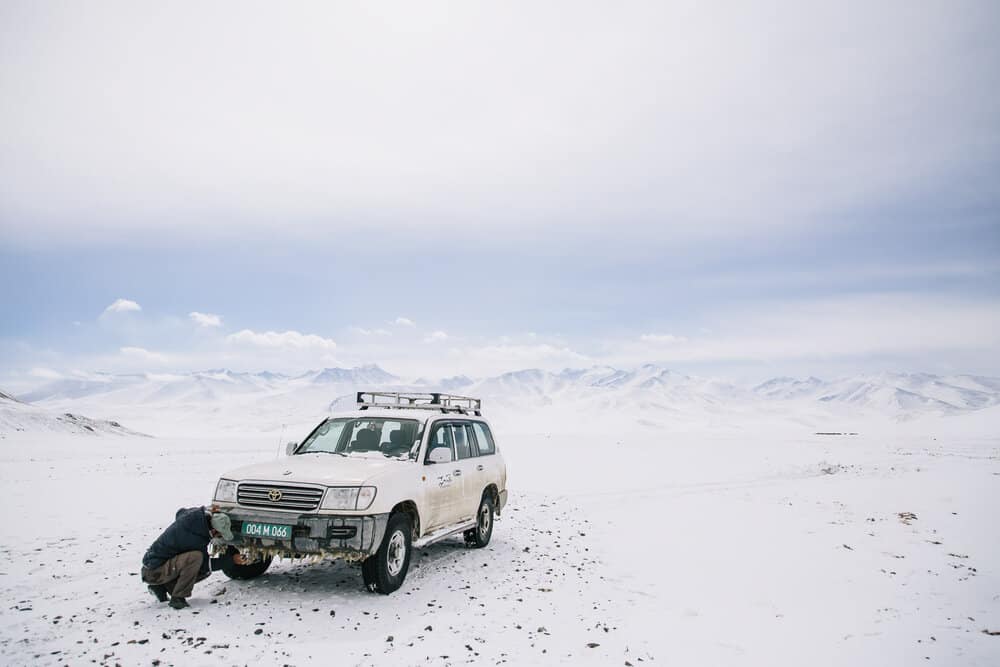
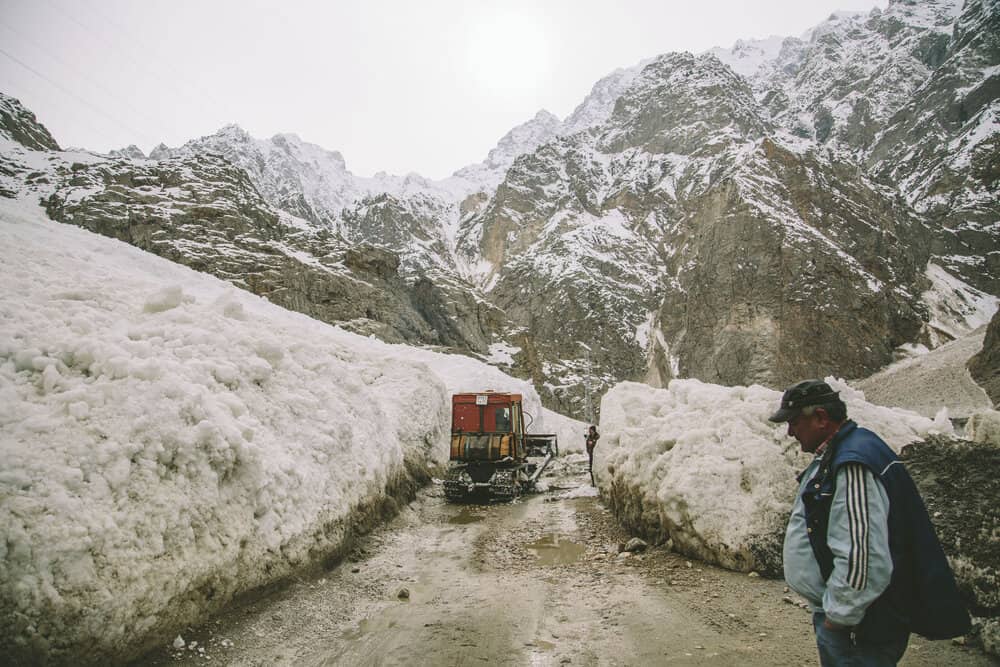
It wouldn’t be easy. These mountain herbivores are extremely rare to begin with, and their tawny brown coats allow them to all but disappear into the uneven rock faces where they graze. By the time the Soviet Union released its grip on this Central Asian nation in 1991, there were fewer than 700 of the goats left on the planet. Half of them lived here in Campbell’s destination, on the southwestern fringes of Tajikistan’s Gorno-Badakhshan Autonomous Oblast, a Soviet-era regional designation that’s still in use today.
To blame for the species’ dwindling numbers were all the usual suspects: habitat loss, competition with grazing livestock, and diseases transmitted by domestic animals. Most of all, however, the markhor suffered from decades of unrelenting pressure from poaching—illegal hunting for meat by locals, along with the occasional illicit trophy hunt.
Those declines are finally in reverse. Between 1994 and 2015, the species was classified as “endangered” in the International Union for Conservation of Nature (IUCN) Red List of Threatened Species, but then, two years ago, it graduated to “near threatened.” Markhors are not out of the woods yet, but things are starting to look up.
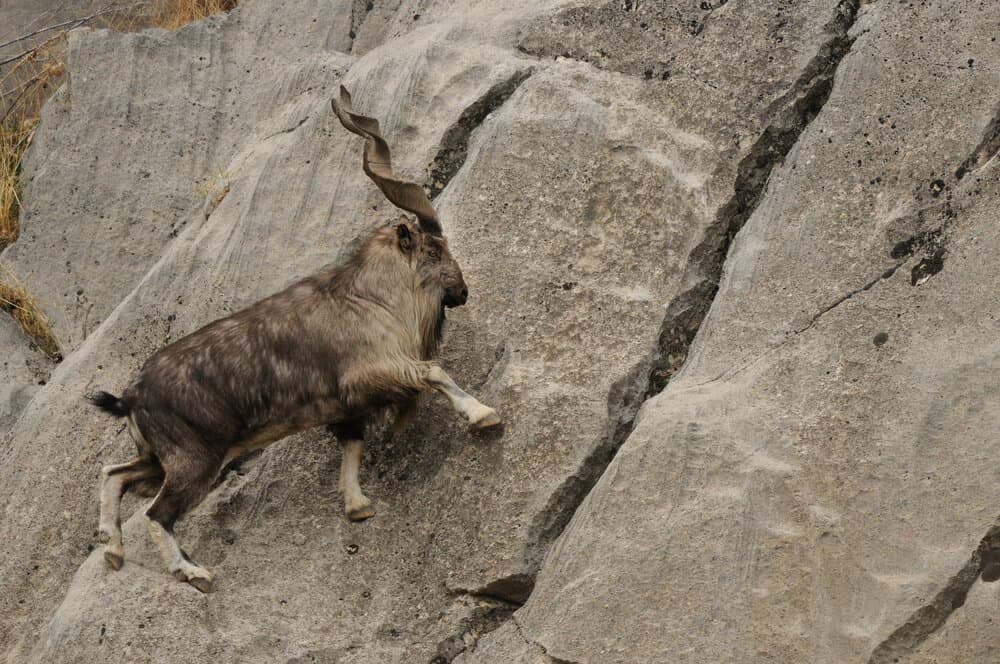
The Tajik population of Bukharan markhor has more than quadrupled since the early 90s; the latest surveys estimate that some 1,900 markhor graze these steep slopes. And finding one has become a bit easier—at least if you know where to look. In a world suffering what many conservation biologists call a sixth extinction, such conservation success stories are rare. So, too, are folks like Campbell, who had shelled out some $120,000 for the chance to shoot a markhor dead.
“It’s probably the most expensive hunt in the world,” Campbell says. “This is basically where my income goes.”
Trophy hunting is often portrayed as the worst sort of human entitlement, a way for extremely privileged white men—and, indeed, they typically are all three—to assert their dominance. Wayne Pacelle, president and CEO of the Humane Society of the United States, has called the practice “cruel, self-aggrandizing, larcenous, and shameful.” Jimmy Kimmel called it “vomitous” in a televised monologue in 2015.
But as I traveled along the same roads several months after Campbell’s journey, I learned that wealthy hunters like him are the main reason that Bukharan markhor still exist at all—despite how uncomfortable that truth may be. In specific cases—as even some conservation groups attest—trophy hunting can be an invaluable tool for protecting species and the ecosystems they rely upon.
Some hunters, of course, are almost certainly engaged in a vainglorious pursuit of power—and lack the self-awareness to realize it. But after spending time with dozens of Tajik hunting guides and wildlife biologists (some of whom were both) on two markhor hunting concessions in southern Tajikistan, I discovered that painting the entire hunting community with such a broad brush ignores a reality: the trophy hunters who attempt to engage honestly with the thorny ethical quandaries underlying their pastime, who go out of their way to have their fun in an ecologically and socially responsible manner.
Still, these folks breathe rarefied air. “It’s an elite experience. It’s for wealthy people like me,” says Campbell, who has white hair, doesn’t shy away from foul language, and sometimes goes by the nickname “Wild Bill.” At home in Anchorage, Campbell has a private psychiatry practice. “I earned my money the old fashioned way,” he says, “seeing patients one by one for many years.” He began hunting as a young man, shooting deer near his family’s home in Vermont. Later, as a medical student in Southern California, deer hunting allowed him to afford eating meat. “That was an alternative to eating peanut butter,” he says.
As his fortune grew, Campbell turned his attention toward more exotic, expensive, difficult hunts in far-flung locales like Nepal, Zimbabwe, and Tajikistan.
In the contracts he signs with hunting preserves, he usually insists that he be the only hunter present. Sometimes the law already ensures this: Tajikistan’s 74-square-kilometer (29-square-mile) Saidi Tagnob concession (the name means “downhill hunt”), Campbell’s destination last December, was granted only one markhor hunting license for all of 2016.
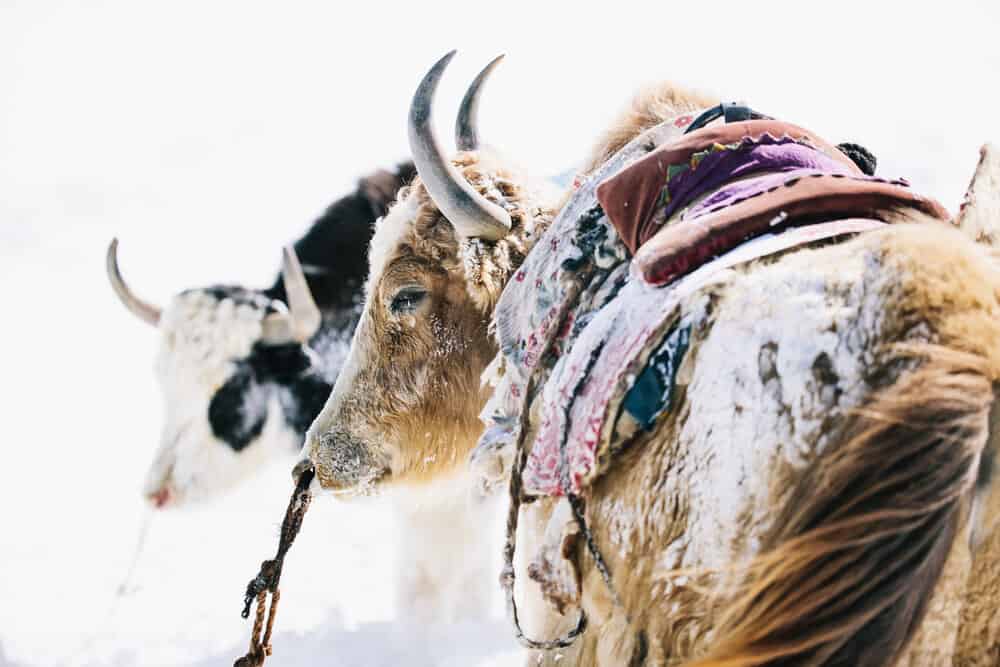
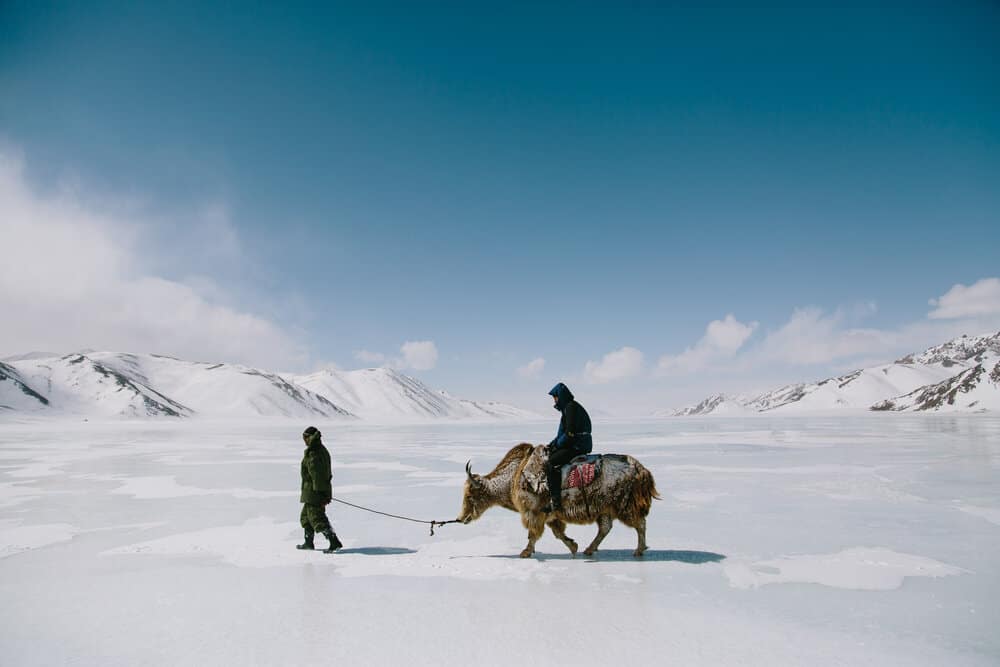
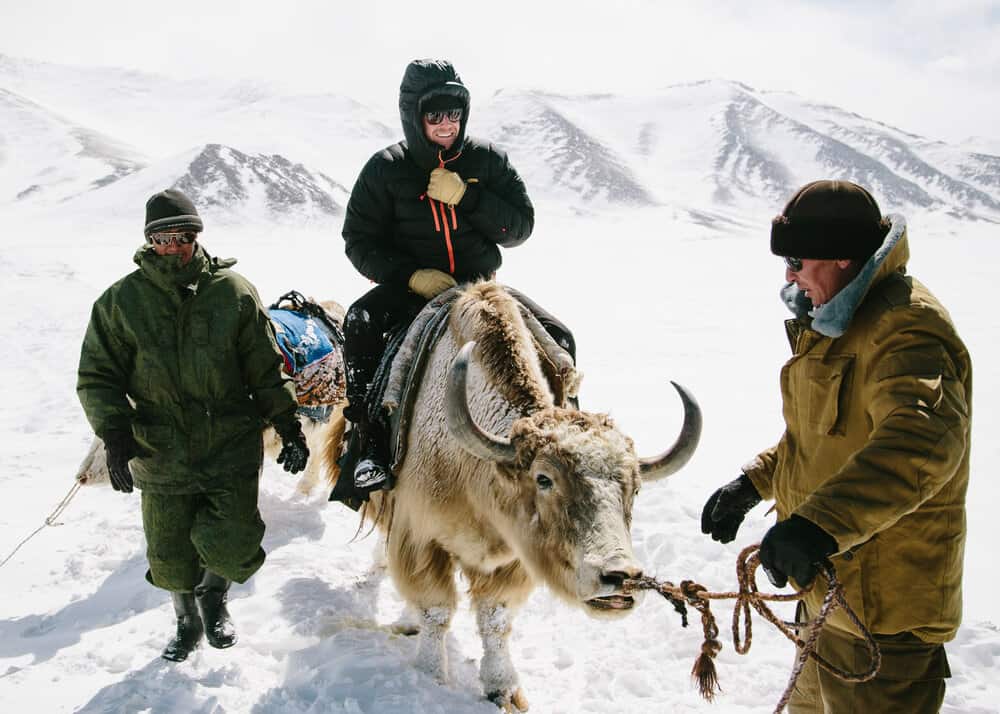
Once Campbell arrived at the concession, his only focus was on negotiating the difficult terrain. Ten rangers carried his gear: backpack, rifle, and all the supplies they would need to survive several days on desolate, frozen ridges. The group began by winding its way up a riverbed. “It was a shallow, rocky river, so you could cross without getting your feet wet,” Campbell recalled from his home back in Alaska.
“At one point, it narrows down and goes through this remarkable rock formation called ‘the vagina.’ It’s what the locals call it. It’s this narrow slot maybe five or ten feet wide that the whole river goes rushing through, so at that point it’s quite deep. It’s quite exciting to be jumping from rock to rock in this.” In his younger days, Campbell was a skilled mountaineer. The high point in his life, he says, was summiting Half Dome in Yosemite National Park. This sort of adventure is his true passion.
A little farther upstream, Campbell and his team came across a group of locals digging along the riverbanks with small shovels. He suspects they were searching for gold; the nation produces some 1.5 tons of the precious metal each year. “If it weren’t for this hunting conservancy,” Campbell mused, “I think the chances are extremely good that some company would have a gold mine there, and it would be an ecological disaster.”
By allowing for the sale of trophy hunting expeditions, the argument goes, privately held lands can be managed for the benefit of wildlife. The alternatives seem objectively worse: mining, ranching, agriculture. Isn’t it better to sacrifice a few old animals in order to maintain an entire functioning ecosystem?
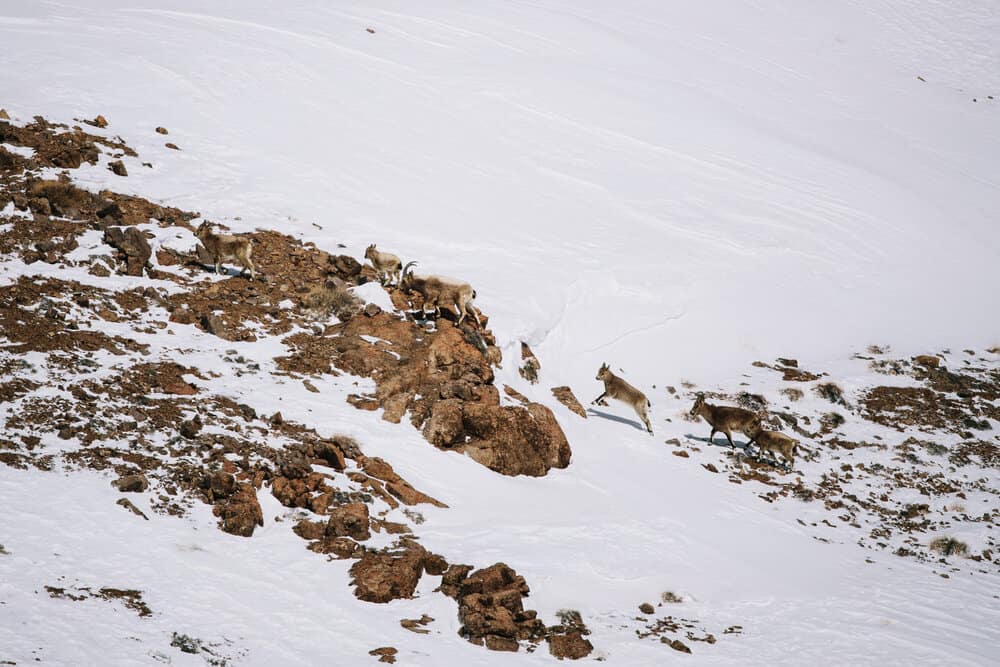
It’s not quite that simple, of course. For trophy hunting to be an effective conservation tool, not only must it rival extractive industries like mining or logging in terms of revenue earned, it must also de-incentivize the poaching that has plagued the markhor for so long.
Markhor poaching is different from the sort that afflicts rhinos and elephants. The prize isn’t a horn or tusk that winds its way to the Far East to be bought and sold for use in a traditional healing practice or as a conspicuous display of vanity. When a markhor gets poached, it is typically at the hands of a poor Tajik villager, who is just looking for a decent meal for himself and his family. While some markhor are indeed killed as the result of illegal trophy hunting, most simply wind up on local dinner tables.
To be effective, legal trophy hunting must therefore benefit not just the animals themselves but also the human communities that live alongside them.
Back in the early 1980s in Pakistan, a group of tribal leaders became concerned that their large animals—like the Suleiman markhor (Capra falconeri jerdoni), a close relative of Tajikistan’s Bukharan sub-species—were disappearing. As in Tajikistan, uncontrolled hunting for meat was the primary threat. Working together, the community set up a conservancy based upon a simple premise: In return for giving up hunting, local men would be paid as game guards to prevent poaching. The financing would come from limited trophy hunts by wealthy foreigners. Besides the salaries, most of the meat would also be turned over to local villages. And whatever money was left over would be re-invested in the community itself. The Torghar Conservation Project resulted in a dramatic decline in illegal poaching, and an equally dramatic increase in markhor numbers. Between 1986 and 2012, the project delivered more than $2.7 million to local communities, while the markhor population increased from fewer than 100 animals to an estimated 3,500.
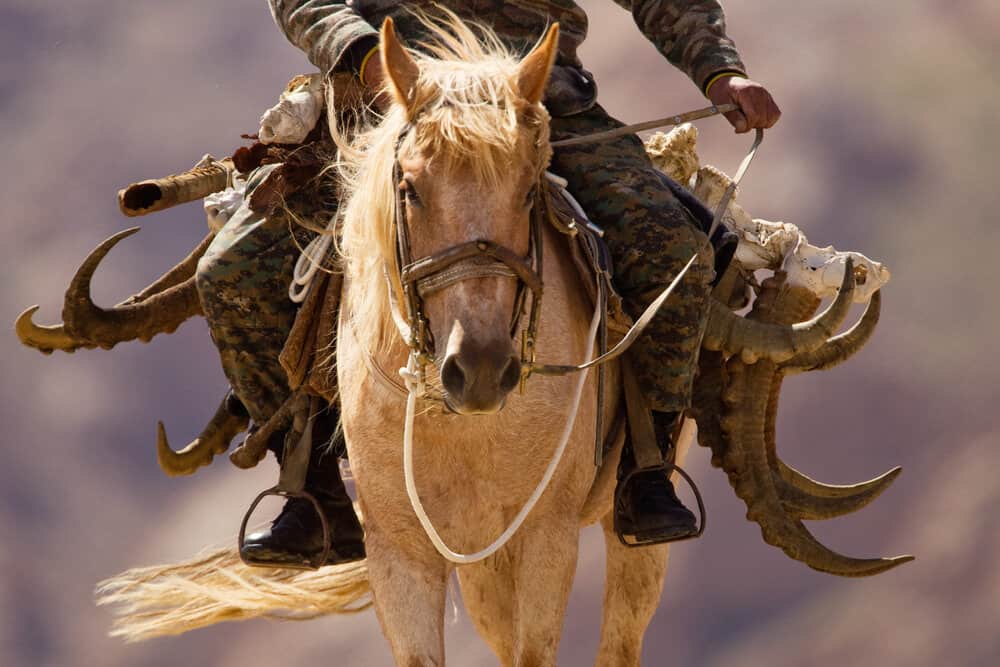
Many in the high-mountain Tajik communities were eager to replicate the Torghar experiment. With initial support from the German Development Agency (GIZ), they learned how to monitor and protect the markhor, along with the other large herbivores in the area, like Siberian ibex (Capra sibirica) and Marco Polo sheep (Ovis ammon polii).
It was about then that the international big-cat conservation group Panthera began its own work in Tajikistan.
“Panthera has a complicated view of trophy hunting,” says Tanya Rosen, director of Panthera’s programs to protect snow leopards (Panthera uncia) in Tajikistan and Kyrgyzstan. “When it comes to trophy hunting of big cats, we’re not supportive. But in the case of the prey of big cats, it is slightly different.” Predators need prey. If trophy hunting can boost a struggling population of prey animals, then it brings an indirect benefit to the cats. It wasn’t long before Panthera became involved in the markhor project as well, by providing logistical support to the communities, including binoculars, spotting scopes, and vehicles, by training community members on wildlife monitoring techniques, and by aiding the communities in their interactions with the Tajik government, the IUCN, and various international hunting organizations.
At that time, hunting of any kind was illegal in Tajikistan. Some countries, such as Zimbabwe and Costa Rica, have bans on hunting for sport, or partial bans for certain species, like Zambia’s ban on lion and leopard hunting. A wholesale ban on all forms of hunting is rare, but not unheard of. Earlier this year, Kyrgyzstan’s Parliament narrowly rejected a proposed ban on all hunting activities through 2030, with only small exceptions made for lethal predator control.
In order for international hunters to legally export their kills, Tajikistan would have to overturn its ban, legalize trophy hunting, and join the Convention on International Trade in Endangered Species (CITES). If they had any hope of convincing the government to do these things, the Tajik communities would have to demonstrate their commitment to wildlife conservation by documenting the progressive increase of the markhor population while reversing their own poaching activities.
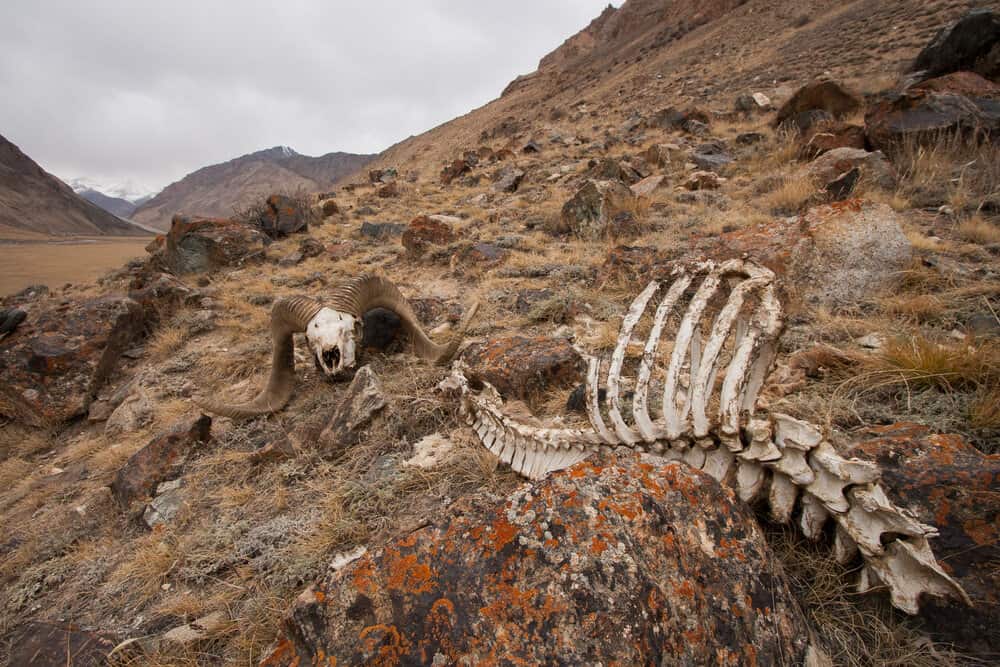
In 2004, the handful of communities living alongside the markhor began the hard work of bringing an end to their traditional poaching culture, and of preserving 560,000 hectares (more than 2,100 square miles, an area almost twice the size of Rhode Island) of prime markhor habitat on the promise that they would one day benefit from trophy hunting. “For several years, it was all about protection and conservation,” says Rosen. Everyone worked on a volunteer basis. Even the rangers went unpaid.
The first legal trophy hunts would not occur until 2014—a decade later.
I made my own expedition to markhor territory in March of this year. Over a meal of domestic sheep meat and rice, bread and honey, tea and cherry juice, Odina Abdulkhaev, the 63-year-old director of the Saidi Tagnob conservancy, explained to me (with Panthera’s Rosen translating) that hunting wild animals was simply a way of life before he and his counterparts began to realize how special the markhor was. By protecting them, he has used the funds from three years of legal trophy hunts—just one hunter each year—to dramatically improve the lives of those in his community.
Hunting revenue is used to pay 10 rangers—each of them former poachers—a full-time salary. Markhor money also goes toward buying books and uniforms for schoolchildren, and paying teachers’ salaries.
After lunch, we strolled through Anjirob until we came to a clearing. Looking out across the valley towards Afghanistan, Abdulkhaev pointed out what appeared to be a black cable strung across dozens of wood posts. It’s a new 3-kilometer-long water pipe that brings clean water directly to the village. He smiled, flashing his gold teeth, and told me that work was underway on an even longer pipe, close to 15 kilometers long, that will bring fresh water directly to the schoolhouse. All of it was paid for with revenue from trophy-hunting fees.
Of the $100,000 to $120,000 that a markhor hunter shells out, $41,000 goes directly to the government to pay for the license. Of that money, $8,200 is funneled to the national government and the rest is split between regional and local authorities. Most of what’s left—more than 60 percent—stays with the hunting concession to be used for projects like Abdulkhaev’s water pipes.
According to Farhod Mamadnazarbekov, Deputy Chair of the Gorno-Badakhshan Autonomous Oblast Committee for Environmental Protection, a fair amount of the money that winds up in government coffers is used to benefit both wildlife and the public. The funds, he said, are used to provide hay to livestock herders—so they won’t have to compete with wild herbivores for grazing space—as well as for supplemental food for wildlife in areas where plant communities haven’t fully recovered from decades of over-grazing. He also said that funds are used at the district level to support governmental wildlife monitoring efforts, and to provide coal for heating so people won’t be forced to harvest plants for fuel, depriving wildlife of food.
It’s hard to determine how much of what Mamadnazarbekov described is true. Several sources told me that some money must also be spent making various payoffs that aren’t legally justifiable, and that the government doesn’t necessarily spend its share of the revenue as they are supposed to. In a country with a per capita GDP of just 804 U.S. dollars, it’s not hard to imagine why many people here would want a piece of the action. Bribery and corruption may simply be part of the cost of doing business, even when that business is wildlife conservation.
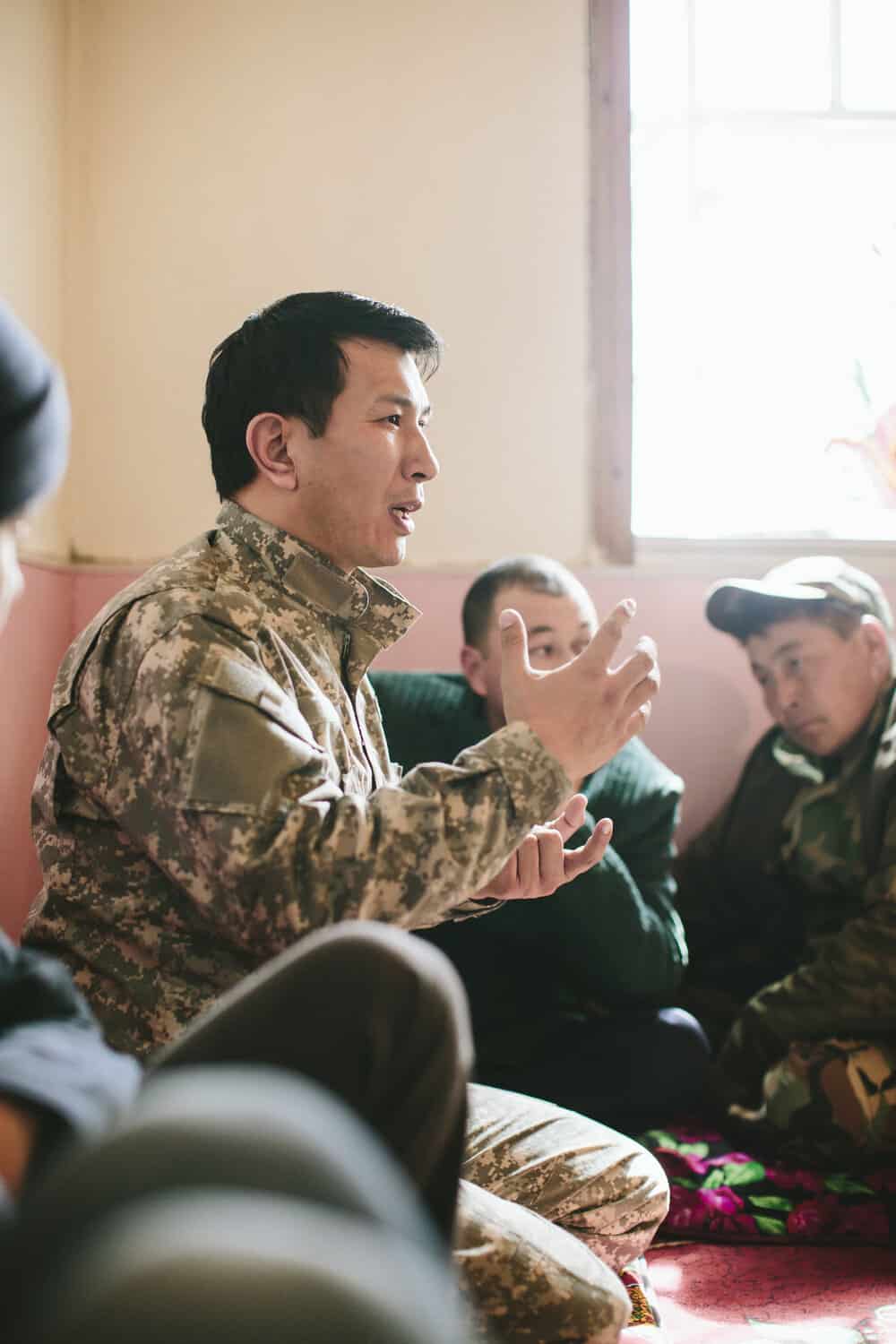
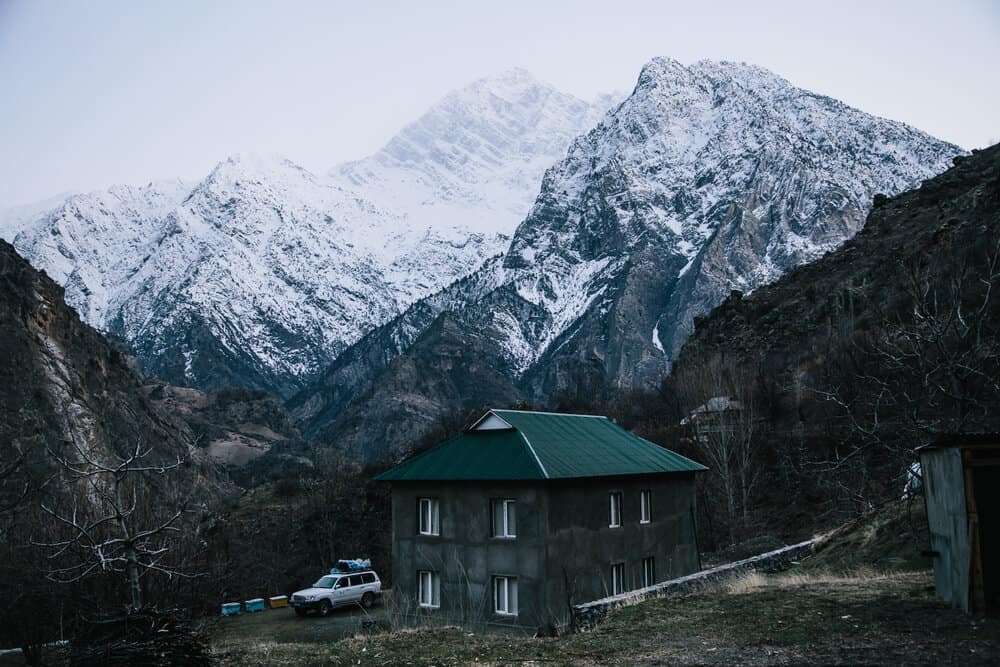
Some 60 kilometers away from Anjirob sits a village called Zighar, home to a 70-year-old man named Davlatkhon Mulloyorov. Together with two of his four sons, Ayub and Khodudod, Mulloyorov oversees the country’s largest markhor hunting concession, an area of some 150 square kilometers (58 square miles), two-thirds larger than Manhattan. His operation, called M-Sayod, won three of the country’s nine markhor hunting licenses granted in 2016, all of which were sold to foreign trophy hunters: two Americans and one German. (In total, the nine permits went to seven Americans, one German, and one Russian.)
Like Abdulkhaev, Mulloyorov takes great pride in the community projects he has funded, many of which are also related to clean water, health, and education. He’s built pipelines to all three villages inside the concession. He’s offered scholarships to help some of the villagers attend university in Khorog or Dushanbe and hopes soon to send several particularly gifted students to study abroad. When a bear mauled a local villager, Mulloyorov used hunting revenue to cover medical expenses. Markhor funds have also paid for some of Panthera’s prey-animal surveys and snow leopard camera-trapping studies at M-Sayod.
In 2013, those camera traps revealed six snow leopards inhabiting an area less than 100 square kilometers (39 square miles) within the conservancy. At the time, it was the highest density ever measured for the cats anywhere in the world. Two years later, Rosen and her team documented 10 snow leopards there.
Despite its benefits, this conservation strategy can still strikes many as unpalatable, or worse. The potential for corruption, when so much money is changing hands inside such a poor country, raises legitimate concern. But it’s difficult to argue with the results, at least so far. More than 10 years of intense effort have allowed the markhor population in Southern Tajikistan to flourish.
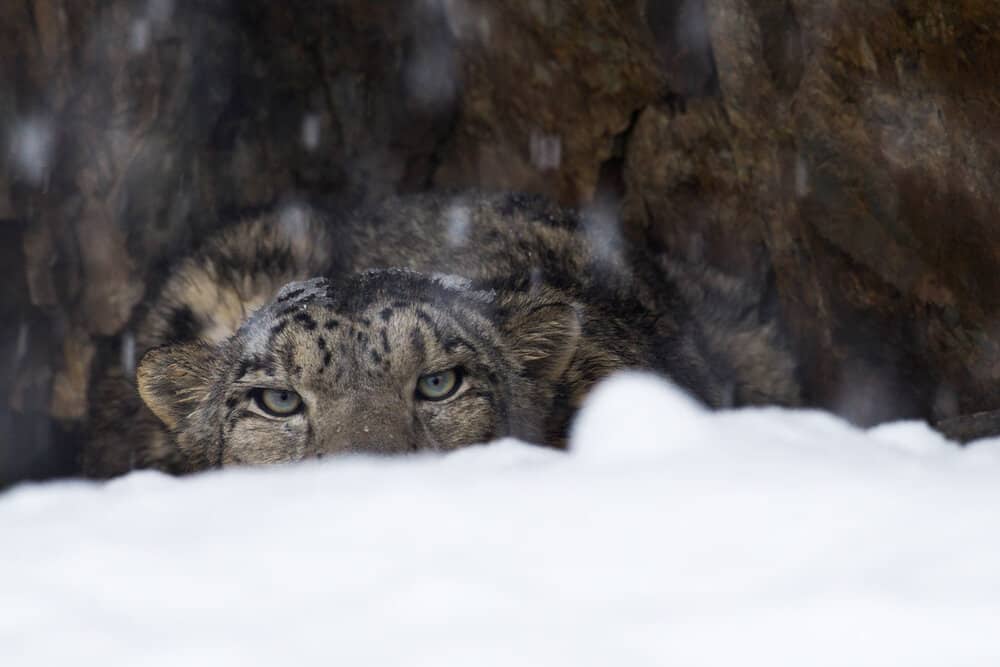
Still, why not simply establish a national park to protect Tajikistan’s unique faunal heritage? The main reason is that formal legal protection over a landscape only works when there are sufficient resources available to monitor and protect wildlife. That’s a tough proposition for a nation as poor as Tajikistan. And when park designations are imposed from the top down, without the buy-in of local communities, they’re rarely effective. Hunting bans instituted in this way can even lead disempowered communities to intensify their poaching efforts, rather than to reduce them. As people perceive diminished opportunities to care for the nutritional needs of their families, conflict with the government increases. Communities exert even greater control over a landscape to which they feel entitled, and over its natural resources.
On the other hand, when local communities can benefit economically from the sustainable use of wildlife, they instead become stewards of those natural resources. “The key is for the communities to connect livelihood benefits with species conservation,” said Rosen. It isn’t enough to simply use hunting revenue to build a hospital or a school, or to set up a scholarship for gifted students, she adds. People need to understand the direct link between wildlife conservation and these benefits.
By allowing hunters to shoot three markhor last year, Mulloyorov said he’s been able to protect the nearly 550 that live on his concession, plus the 10 snow leopards, while simultaneously making daily life easier for the people who live alongside them. This is the Faustian bargain of modern trophy hunting. “If 30 years ago there was an opportunity for [hunting] Persian leopards and tigers,” he said, “we would still have leopards and tigers.” This rationale applies not just to the markhor; in 2016, Tajikistan also offered permits for up 85 of its population of near-threatened Marco Polo sheep—a sub-species of argali with especially large horns—as well as for Siberian ibex, another more plentiful, wide-ranging type of mountain goat that has been hit hard by illegal poaching.
In the 1990s, Mulloyorov said, snow leopards were often killed in retaliation if villagers suspected them of preying on livestock. But here in Tajikistan, a far more progressive approach to animal husbandry is now emerging, one that is rare even in parts of the United States. Mulloyorov believes that herders have a personal obligation to keep a close eye over their livestock. If a snow leopard or a wolf grabs an easy meal, the fault lies with the shepherd, not with the predator, he told me. Rather than directly compensate herders for their lost livestock, he has used markhor money to fund the construction of predator-proof enclosures. In this way, trophy hunting revenue has engendered a more peaceful, if still uneasy, coexistence between people and predators.
Back in Saidi Tagnob in December, Campbell’s group eventually abandoned the river and began their steep ascent into the mountains. The thick snow and bone-chilling air made it difficult going, but by nightfall, they’d reached a primitive adobe cabin with a nearby outhouse built by the conservancy for hunting parties. The rangers lit the wood stove to prepare dinner, and the group fell asleep in relative comfort.
On the second evening, the party reached a small sod dugout, a sort of log cabin built into a ditch that had also been provisioned with a small wood stove. This would be their home base for the remainder of the expedition. “You go out every day and get up high and ‘glass’ with binoculars and spotting scopes, looking for animals,” Campbell says. “We saw some 150 markhor, including females and very young ones. When you’re trophy hunting you’re looking for a very old male.”
For Campbell, it took only two more days to find what he was looking for. After settling on a suitable target, he fired off a shot, and missed. Later, he spotted another prize, an older male grazing alone—which indicated the animal had been kicked out of his herd and was no longer part of the breeding pool. Campbell took his second shot, from 343 yards. “It was a beautiful animal in a beautiful setting,” he says of the approximately nine-year-old male. “It was the most exciting hunt of my life.”

A South African hunter called Isaac (not his real name), who bagged a markhor in the M-Sayod conservancy two years earlier, tells a similar tale. “It’s a matter of walking, climbing, and spotting,” he said. After selecting a target, he begins the long process of “stalking that particular animal to try and get within reasonable range. It’s very difficult to get close to these animals. They are the king of the mountain,” he told me.
Isaac’s take is somewhat more thoughtful than Campbell’s. “You’re faced with sadness and joy,” he explains. “Joy that you achieved what you did, but there’s a sadness associated with it. It’s a very emotional time when you look at an animal you’ve just killed,” he says.
After Campbell’s successful shot, a ranger escorted him back to camp to rest while the remaining nine set about retrieving the carcass, which had fallen down a particularly treacherous slope. Once he could better examine his prize, Campbell discovered some buckshot in one of the animal’s hind legs, evidence that some locals had tried, and failed, to kill the animal for meat years before. The markhor’s misshapen hooves also revealed a prior case of foot-and-mouth disease, likely transmitted by domestic animals grazing nearby. “These are common problems faced by conservationists in developing countries,” Campbell said.
As they warmed up in the adobe cabin, one Alaskan and 10 Tajik hunters feasted upon markhor kabobs. The remainder of the meat went to feed people in the nearby community—first the concession’s rangers and their families, and then others in the village. In addition to the massive sum Campbell paid for his adventure, he tipped each of his hunting guides $200, an amount greater than the average monthly wage in Tajikistan.
For better or worse, conservation often comes down to cold, hard cash, which is why a common refrain is that shooting animals with cameras is a preferable alternative to shooting them with bullets. Even photographic tourists spend a considerable amount of money while on vacation—and it’s the gift that keeps giving.
But with prime markhor habitat along Tajikistan’s southern border sitting literally rock-throwing distance from Afghanistan, this is not a place most tourists are willing to take their holidays—despite the stunning landscapes and the friendly, welcoming people. The terrain is difficult, the weather is extreme, and the air is thin. Traditional tourism infrastructure is non-existent. There isn’t a fancy hotel or lodge in sight, to say nothing of indoor plumbing or, in some areas, electricity. To find a restaurant means driving at least a few hours and, in the winter, risking getting caught in an avalanche. Wealthy hunters just might be the best hope for the survival of these imperiled wild animals, given the harsh realities of life in these parts.
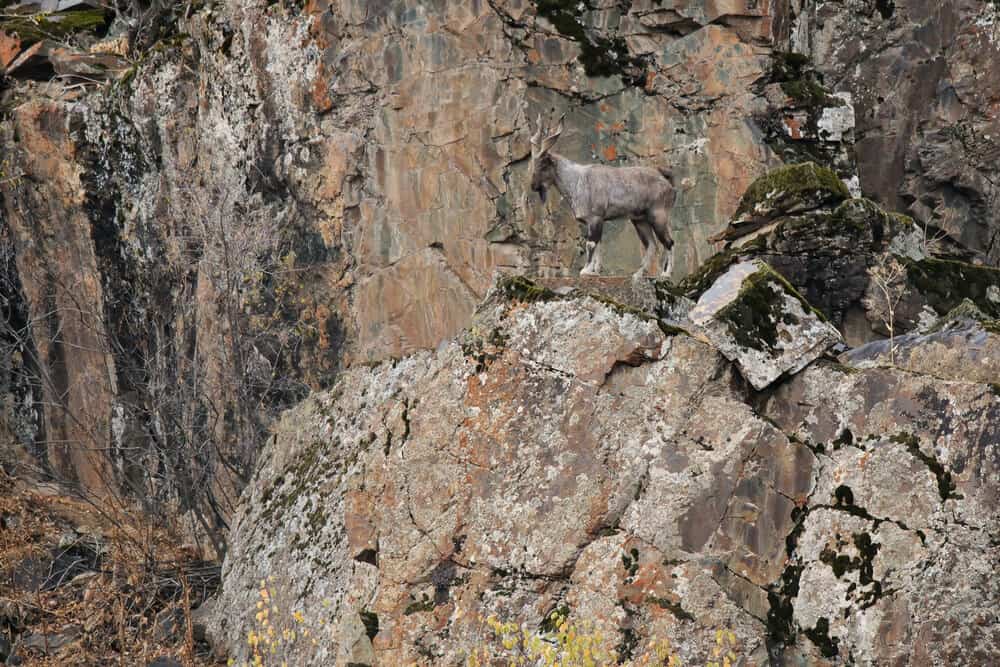
I asked Campbell about the furor kicked off by the American dentist Walter Palmer when he shot an African lion nicknamed Cecil just outside of Zimbabwe’s Hwange National Park in July 2015. In the weeks following the botched lion hunt that became international news, Palmer was forced to contend with threats against his life, his family, and his business. “I feel sorry for him,” Campbell said. “I think that the people who lynched him [online] don’t realize how much he has done for conservation.”
Campbell knows Palmer socially. “I wouldn’t be surprised if Walt spends $250,000 to $500,000 a year hunting. And the people who are lynching him donate 25 bucks to the Sierra Club. Who’s done more for conservation? There’s no comparison.”
But it’s not only about economics for the rural Tajik communities. Modern trophy hunting is also seen as a means of encouraging a return to an older, more sustainable relationship between people and wildlife.
“During older times, hunting supported an entire village,” Munavvar Alidodov, a Panthera field biologist and also a member of Tajikistan’s Yoquti Darshay ibex hunting conservancy, told me. “There were rigid rules: Do not shoot a pregnant female; do not shoot during the rut; only target older males.” But when modern weapons were introduced, he explained, suddenly anybody—not just a skilled hunter—could easily kill a large, wild animal. The old cultural guidelines were quickly forgotten. “These community-based organizations are trying to recreate traditional hunting ethics,” he said. They are simply taking advantage of a somewhat more modern tool—affluent foreigners—to do so.
Campbell is busy planning his next community-based trophy hunt in Tajikistan. He’s eyeing the Marco Polo sheep, a hunt he’ll attempt on the even tougher, higher, and more remote Pamir Plateau. “I feel good about it in my heart because I feel like I’m promoting really effective conservation.” He’ll spend around $40,000 to add the sheep to his collection.
This story originally appeared in bioGraphic, an online magazine about nature and sustainability powered by the California Academy of Sciences.
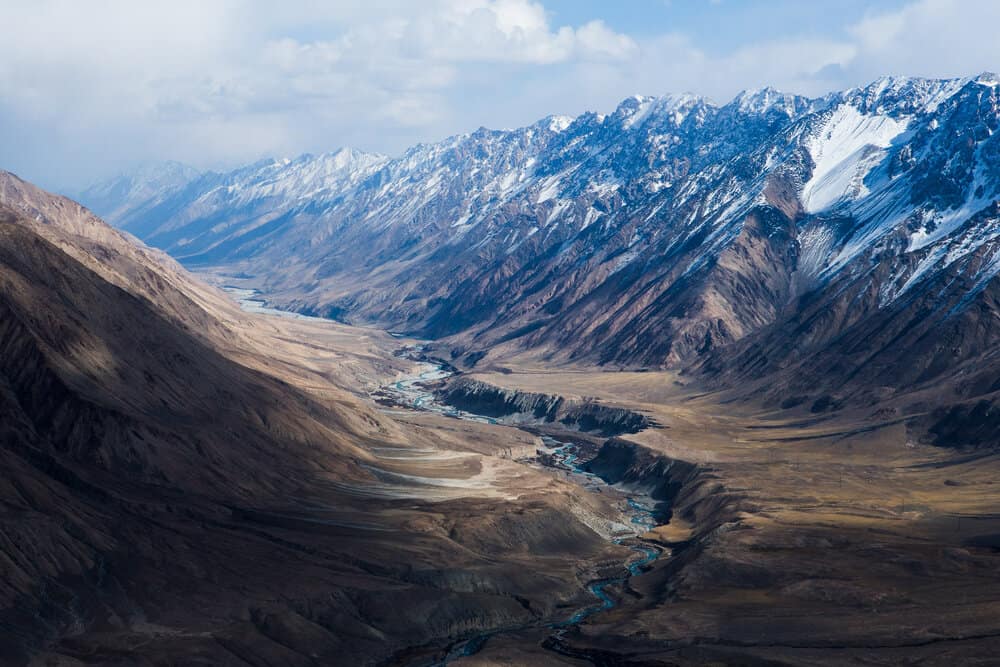
To read more about community based conservancies by Jason G. Goldman & Joel Caldwell order a copy of Modern Huntsman Volume Two: Public Land